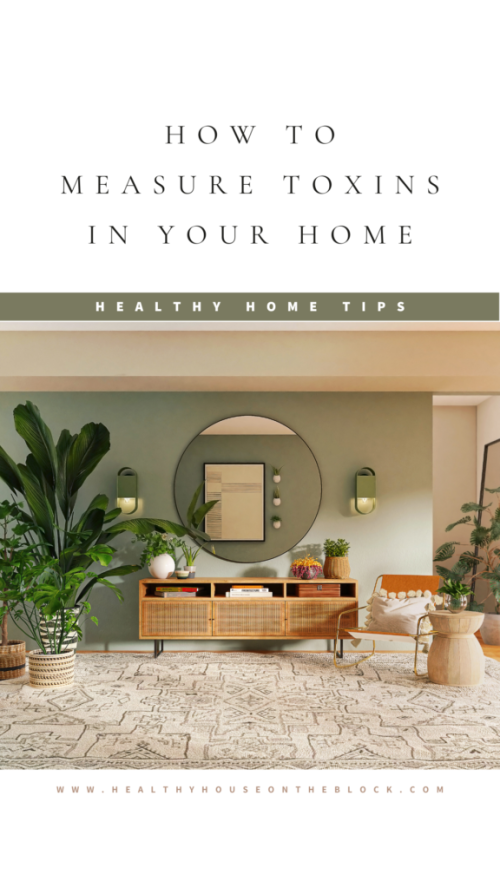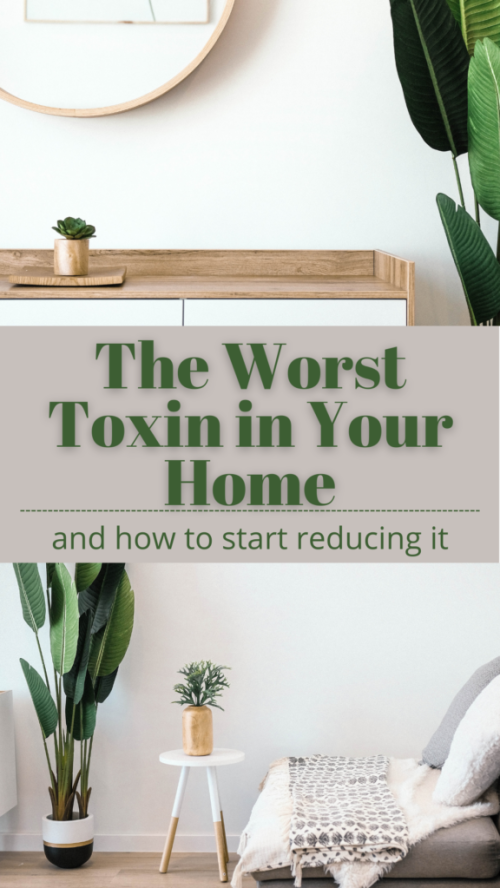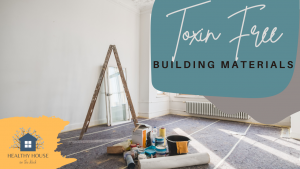
You know those toxins that are just about EVERYWHERE? The ones that you’re coming in contact with ALL the time? The ones that are burdening down your body severely simply because we are constantly being exposed to them? Formaldehyde is a BIG one that checks ALL of the above.
It doesn’t matter where you go, chances are you’re being exposed to the VOC, formaldehyde. This toxin is commonly inhaled, as it’s a volatile organic compound that off-gasses. And what happens in our homes is that the off-gassing toxins have no place to go. Without proper ventilation in our homes (which I should mention we get VERY little ventilation in most of our homes), formaldehyde levels build up in our interior air, making our indoor air quality very poor.
When we look at a toxin, such as formaldehyde, I think it’s important to know more about than just how to avoid it. It’s important to know why it’s used — because this will help you understand when to look for it in products and materials. It’s also important to know what it does to the body. Without knowing this, you may not be convinced it needs to be removed from your home in the first place.
Let’s go on a deep dive of formaldehyde and start getting it out of your home.
WHAT IS FORMALDEHYDE?
To answer the question “what is formaldehyde used for”, you first have to know what formaldehyde is in the first place.
Formaldehyde is a naturally occurring compound. It is considered a gas and it is not able to be seen by the human eye. Often formaldehyde has a very strong chemical scent. Formaldehyde is also extremely flammable and is often used as a preservative in products.
The primary way we come in contact with formaldehyde is through the air as this toxin is a gas and is released into the air. (RESEARCH) Within our homes the gas can get trapped inside, polluting our indoor air and affecting our bodies. This tells us the more ventilation we have, the more the gas can escape our air at home, leaving healthier air for us to breathe when in our spaces.

WHAT IS FORMALDEHYDE USED FOR AT HOME?
As I mentioned before, formaldehyde is in MANY places inside your home. Some of the larger sources of formaldehyde exposure in your home is pressed woods. This would be plywood, manufactured woods, MDF, particle board and chipboard.
These types of woods are often found in the structure of our home as well as in the furniture we bring into our home as well. Formaldehyde is used in the adhesive application of these manufactured woods, which you can read more about here.
Formaldehyde is also used in any sort of resin product that you have in your home. This could be furniture, decor or within your counter tops.
More controllable sources of formaldehyde also exist in air fresheners, plug in fragrances and cleaning products that contain terpenes. These products off gas formaldehyde once they are being used and the formaldehyde enters your home’s air. Oftentimes formaldehyde is in these products as a preservative to increase the shelf life of the solution.
You may also be surprised to find out that formaldehyde is often in clothing, pillows, bedding, curtains and upholstery products. It is used as a “wrinkle free” agent on these items and is embedded into the fabric that is used.
Finally, watch out for formaldehyde in your personal care products like nail polish, nail polish remover, hair straightening and smoothing products, synthetic fragrances and baby care products. Again, it’s added as a solvent or as a preservative in these cases.

HOW TO MEASURE FORMALDEHYDE IN YOUR HOME
Because Formaldehyde is a VOC and because it is not able to be seen, to measure the amount of formaldehyde in your air, you’d have to use a special tool.
You opt for an indoor air quality monitor, which can help you monitor the indoor air at your home. This device will usually detect other issues that can be present in the home as well like combustion gasses and it can also detect high humidity levels. Overall, these are a helpful item to purchase to monitor your indoor air if you’re looking to improve it on many levels.
There is also the option for an at-home formaldehyde test that you’ll be able get the results of right away. It can be used once and in one room, but could give you some insight into your home’s air. This will tell you the level of formaldehyde inside your home and provide you with insight on this particular toxin. Because we know the answer to what is formaldehyde used for, we know that it’s prevalent in most homes and the levels could be potentially high.

HEALTH EFFECTS OF FORMALDEHYDE
When we’re looking at what is formaldehyde used for inside our homes, our health is at the center of the answer. Formaldehyde is a known carcinogen, meaning it can cause and increase the risk of cancer in some individuals.
Formaldehyde has also been shown to change the natural ways cells naturally grow and reproduce in our bodies. This toxin also causes lower than normal count of white blood cells in humans as a result of chronic exposure. Another effect of chronic exposure to formaldehyde is that it does affect the reproductive system and causes toxicity to those who otherwise have a healthy reproductive function. (STUDY)
Formaldehyde vapors can also be really harmful to those who have asthma as an underlying condition. It can cause issues to the neurodevelopment of the brain as well as the pulmonary system in general. (STUDY)
HOW TO REDUCE FORMALDEHYDE LEVELS IN YOUR HOME
The best and simplest way to avoid bringing formaldehyde toxins into your home is by paying attention to the products you are purchasing.
To start, use an app like Think Dirty to assess the personal care products and baby products you may be bringing into your home. This is helpful in not only avoiding formaldehyde, but in avoiding other toxic products as well.
Second, make sure the textiles and fabrics you bring into your home are organic or third party certified. Look for a GOTS Certification or a GreenGuard Certification. These may not mean that the product is 100% toxin free, but it does mean that the product has fewer toxins, and it does limit the amount of formaldehyde entering your space.
Third, avoid synthetic fragrances wherever you can. Swap out those air fresheners and those room freshening sprays for organic essential oils instead. My diffuser blends are a perfect way to begin freshening your room with the use of a diffuser.

Fourth, pay attention to any furniture you purchase. Opt for hardwood pieces that don’t contain any sort of manufactured wood or any glues. This can be tricky, but being less impulsive and purchasing items only when you need it and after you’ve done research is key. Used furniture can also be a really great way to go.
The Fifth option I like to point out is to look for an air purifier that specifically removed formaldehyde toxins. In our home we use Medify Air. It’s a medical grade purifier that removes formaldehyde and other toxins.
Sixth, any area of your home that is impossible to change (think plywood sheathing and subfloor), you can use a formaldehyde VOC blocking sealer to coat the material and ensure that the toxins are contained.
And finally, avoid products with the following ingredients:
- Formaldehyde
- Quaternium-15
- dimethyl-dimethyl (DMDM) hydantoin
- imidazolidinyl urea
- diazolidinyl urea
- sodium hydroxymethylglycinate
- 2-bromo-2-nitropropane-1,3-diol (bromopol)

Even doing ONE of those things will help you reduce the levels of formaldehyde inside your home. And each small change will help unburden your body and create a healthier space at home.
Share this:
- Click to share on Facebook (Opens in new window) Facebook
- Click to share on LinkedIn (Opens in new window) LinkedIn
- Click to share on Reddit (Opens in new window) Reddit
- Click to share on Pinterest (Opens in new window) Pinterest
- Click to print (Opens in new window) Print
- Click to share on X (Opens in new window) X





Hi Amanda,
This is great information about formaldehyde.
I’m on your email list and love all the information you share which made me go look for this article so I could link to you in my latest blog post.https://www.alesstoxiclife.com/health/benefits-of-wearing-organic-clothing/
Thanks, Stacy!
Pingback: Healthy Home Resources for 2021 » Healthy House on the Block
Pingback: How to Use SafeCoat Safe Seal to Reduce VOCs at Home »
Pingback: Healthy Closet Organizers and Minimalist Closet Ideas »
Pingback: Non Toxic Portable Mattresses for Adults, Kids and Babies »
Pingback: Camper Remodel Ideas that are Toxin Free » Healthy House on the Block
Pingback: New Home Toxins: How to Reduce Off Gassing in New Construction
Pingback: Healthy House: Autumn Home Maintenance
Pingback: Toxin Free Luxury Vinyl Plank Flooring »
Pingback: Year End Healthy House Review: Looking Ahead to 2024 -
Pingback: Non Toxic Wooden Bed Frames and Natural Headboards